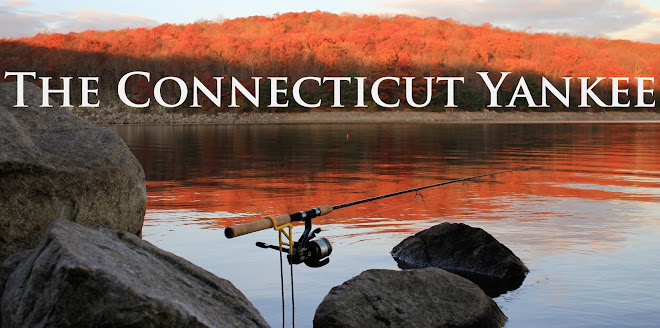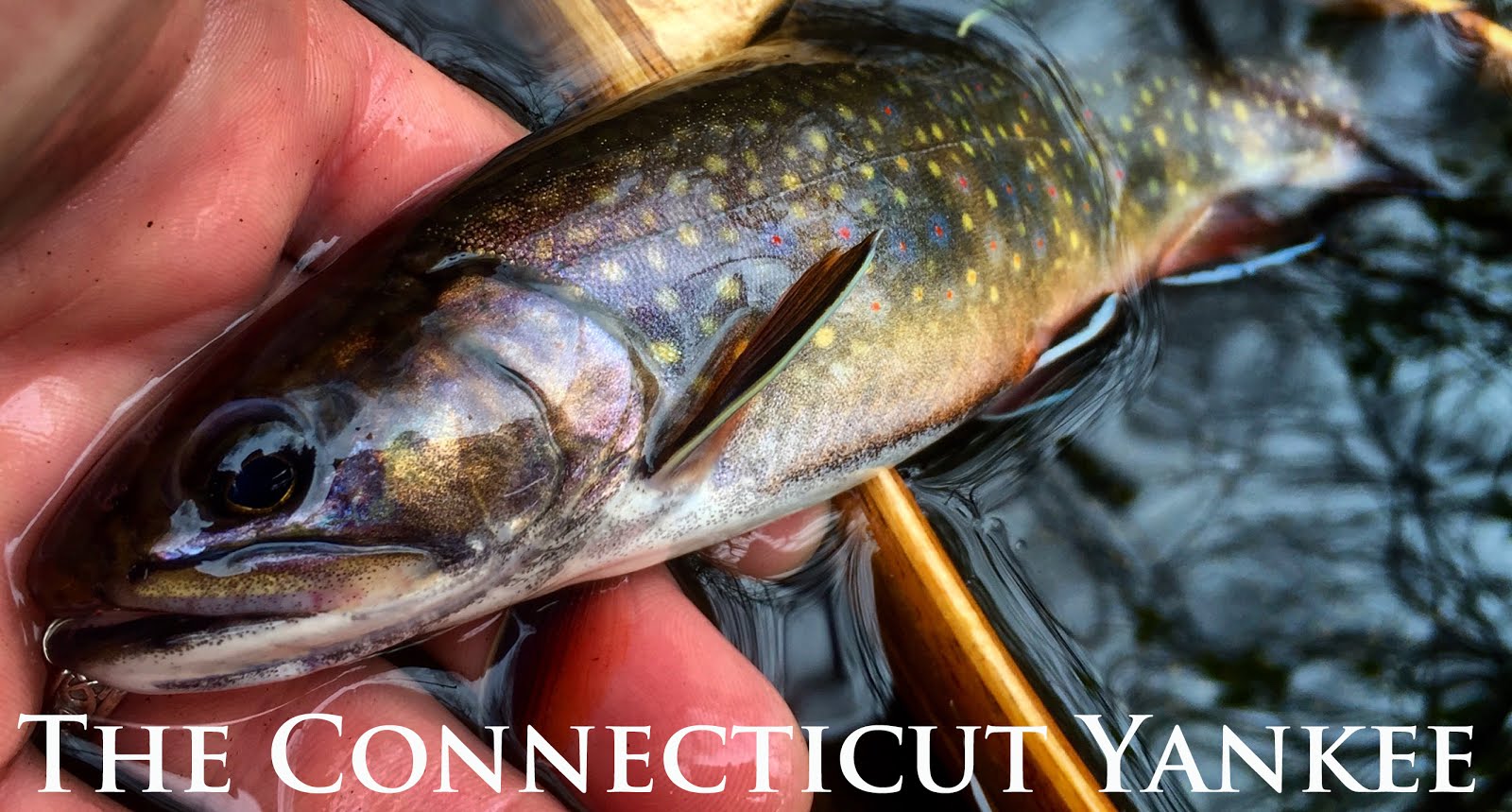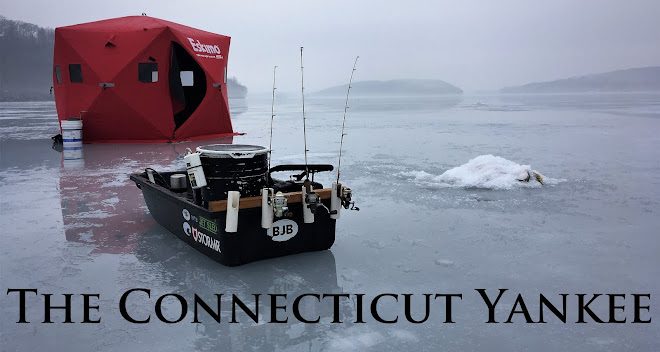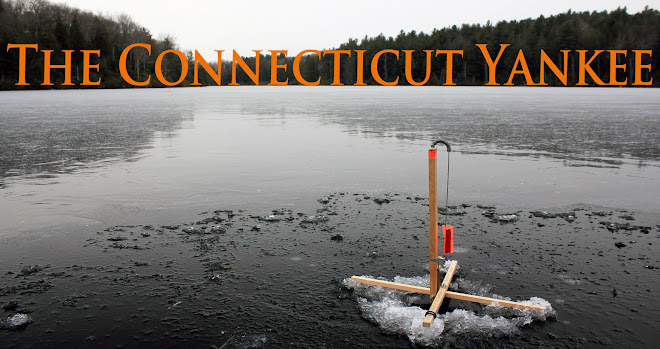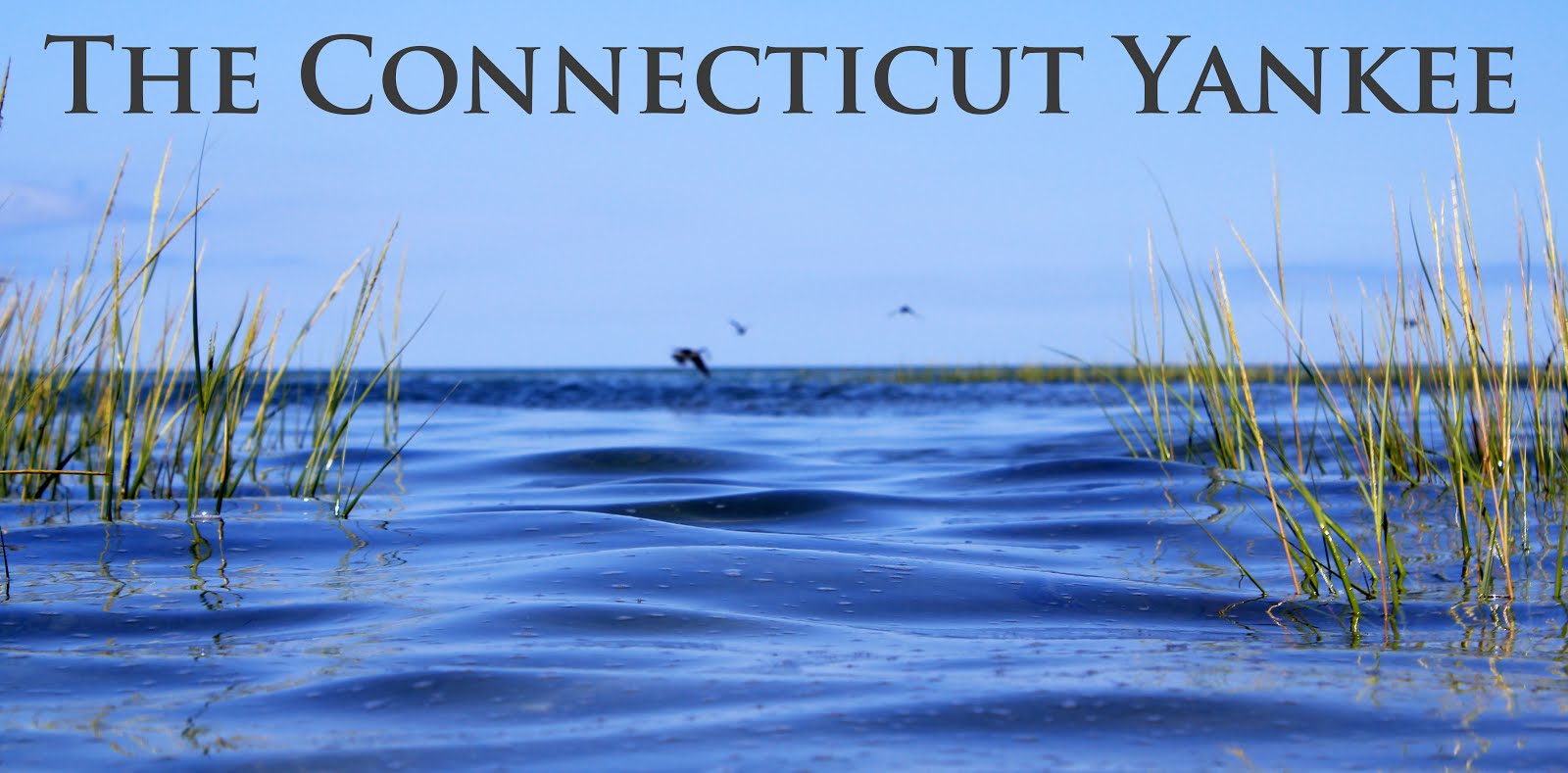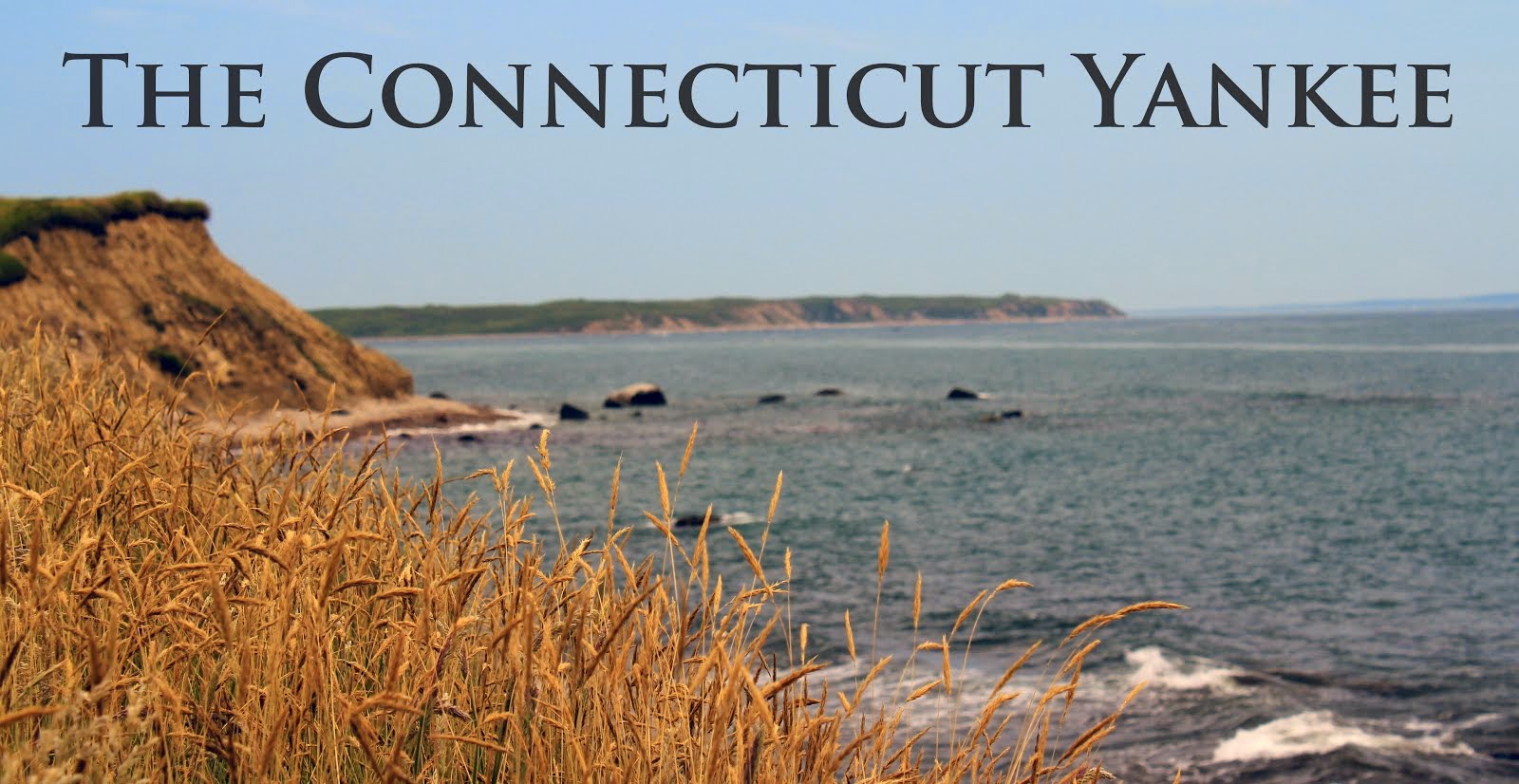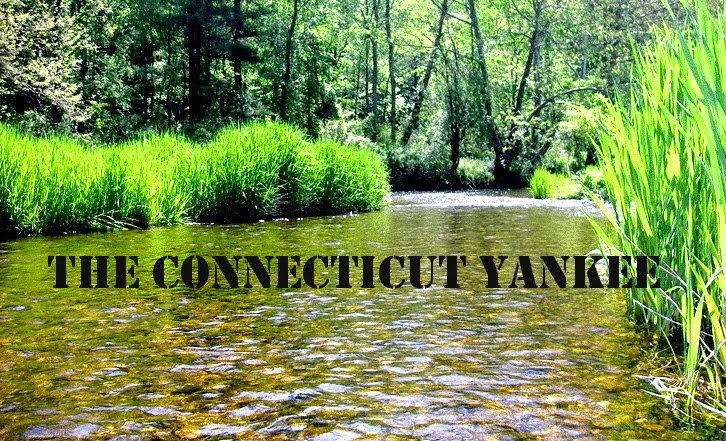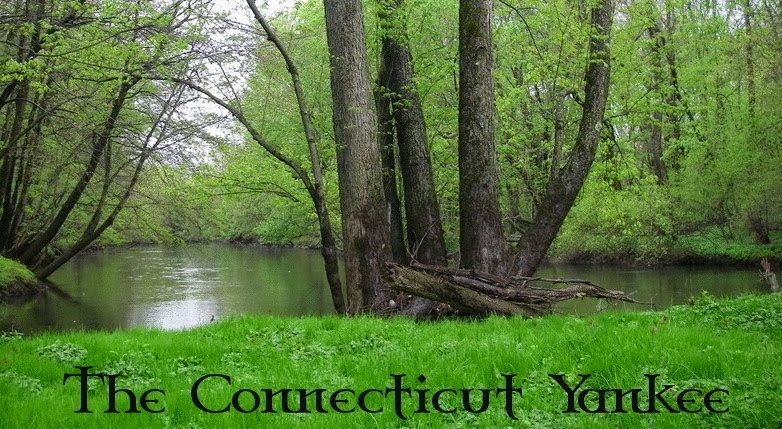To the ever-optimistic surfcaster, August can be a trying month more often than not. There are, however, certain pockets around the northeast that consistently attract striped bass, even during the dog days of summer. Targeting areas littered with structure and nearby deep water can increase your odds of success during these so-called doldrums. Any hot August night is a roll of the dice, but fishing a legendary place like Block Island will keep confidence high for every cast.
 |
| The boulder fields of Block Island are ideal hunting grounds for striped bass |
With life and work soon shifting into overdrive, free weekends will be a rarity over the next few months. To ensure proper dosage of the outdoors, I’ve adopted the motto
fish when you can, and capitalized on an open Saturday night. Two friends and I set plans in motion for an all-night assault of Block Island’s rocky shoreline. Although the most efficient way to traverse Block’s nine square miles is via beach buggy, weekend ferry reservations for vehicles are needed months in advance during peak tourist season. Instead, we would utilize the elaborate ring of taxis that cater to the hopping New Shoreham bar scene.
Upon entering the village of Galilee, Rhode Island, we reluctantly forked over two days worth of parking fees to leave the Jeep for little more than 12 hours. Next we purchased our $23 round-trip tickets and boarded the 7 PM ferry, each toting a 10-foot rod, backpack full of gear, eel bucket, and plug bag. Sitting on the upper deck, we were given a glorious sunset and a slight breeze, which put a fall-like touch in the air and made us question our clothing. Sail time to Old Harbor was just under an hour, more than enough time to wolf down a P&J and lukewarm hotdog from the galley. In a perfect world, a Block Island ferry would serve fresh New England clam chowder, but I needed a base in my stomach. For the next several hours, I’d be living off Red Bull, Snickers and trail mix.
 |
| Dreams of "the one" are common during the sail to Old Harbor |
We walked off the ferry to a bustling waterfront and made a beeline to Taxi Row, where we drilled drivers about their willingness to make late-night runs. Though it was only 8 PM, taxi would be our primary method of transportation and we needed to choose our cabby wisely. Taxis stop running just after last call, so there was time for a max of two drop-offs before we were on our own. A morning pick-up for the first ferry back was also in order, so nailing down logistics was key. We settled on an older gentleman who went by Den Dog and turned out to be a Block Island lifer that doesn’t fish; sad but true. His large van swallowed our 10-foot rods and gear with ease. Our game plan was to start on the Island’s south side, and he brought us there for $20 with no meter turned on. Den Dog was working 'til 2 AM, but asked us not to buzz him around last call, for most of his business came then from drunken tourists spilling out of bars. After a short ride, he wished us luck and left us alone with enough gear for a week-long stay. We started down the pitch black trailhead with a bounce in our step towards the boulder fields.
The roaring surf could be heard long before it could be seen. Just a few days past the August new moon, the night was jet-black and caked with stars. The sliver of moon we did have fell below the horizon early, contributing more to the dark sky. If nothing else, we were lucky that our trip coincided with the tail-end of the Perseid meteor shower. Before the sun showed itself again, we witnessed dozens of shooting stars, some with huge trails streaking across the sky. With no trace of light pollution, the south side of Block was the perfect venue for the celestial fireworks.
The night was young and budding with confidence as we geared up on a large piece of driftwood. Pat donned waders while Derrick and I chose wetsuits, not only for safety, but to reach rock perches out of reach of traditional wading. Pat walked to the water’s edge first and tossed a lively eel into a large bowl between two rock points. To our dismay, his first retrieve revealed the tough conditions. The water here was infested with mung-like seaweed that clung to our braided line and terminal tackle. The steady east wind of the previous three nights had shifted south, and seemed to dirty up the surf with it. Not wasting any time, we left glow-sticks on our backpacks to help us find them later and set off down the beach in search of cleaner water. The terrain on Block is not easy to cover, especially on dark nights. That same terrain, however, is partly why the fishing can be so good. Headlamps are vital, but we use the red light setting, as to not ruin the vision our eyes adjust to after hours in the dark.
 |
| Sundown is welcomed by surfcasters, as bass are notorious night-time feeders |
The initial bowl was by far the worse conditions we encountered, for as we walked westward, the seaweed diminished. The tide was in mid-flood stage and would reach its highest point a little after midnight. There was plenty of white water and depth for bass to come close to shore, but our first hours of casting came up fruitless. Eventually, while using a classic Redfin lure loaded with BB’s, Pat hooked up and got the skunk off our backs. It was not a large striper, at just under 10 pounds, but it was a welcome sign. We kept plugging away with huge cliffs to our back and the vast Atlantic to our front. The fish just weren’t there, or they were there but not cooperating. By this time it was past 11 PM, and we decided to hoof it back to our bags and call Den Dog for a spot change. A quick scare ensued when no cell phones had reception on the beach. We lugged our gear up the trail and luckily found service on top of the cliffs. We rang our driver and waited while contemplating our next move. This would be our last drop-off of the night, so we thought long and hard, opting for a significant change, since we didn’t like what we saw at spot number one. Before long, headlights were barreling down the dirt road and we were whisked away to the west side of the Island for $24. Den Dog wished us luck and arranged for morning pick-up by his colleague before turning his focus to the bar scene and then bed.
We followed the trail at the end of a dead-end road and saw a few headlights to our south and a beach party winding down to our north. The partiers attempted to put out their fire by kicking sand over it, but shortly after they left it came back to life and we found our headquarters until morning. It was noticeably cooler now, so we threw a few pieces of driftwood on and warmed up a bit before another round of heavy fishing. The west side of the Island faces Block Island Sound and the surf was considerably smaller and less weedy as expected. These conditions made it easier to get on and stay on rocks for more distance during casting. The water was deeper here too and perfect for slowly retrieving eels. The tide had just started going out and I saw a flat rock just sticking above the surface twenty yards offshore. It didn’t require any swimming, but without the wetsuit it wouldn’t have been safe to wade to. Pitching eels and plugs off the backside of this rock, I decided, was a worth a good chunk of time. Derrick and Pat kept trekking north to a well-known cove, strewn with fishy water and gigantic boulders.
 |
| Foamy white water is a great place to retrieve your offering through |
It didn’t take long before I was greeted with the telltale bump of a striped bass. After lowering the rod tip, I gave a good hook set that oddly came up empty. Thankfully, a few casts later another tap was felt and this time I connected with a keeper-sized bass. It wasn’t very impressive in size, in the low 30-inch range, but it had stripes and I was finally on the board. My very next cast resulted in another fish, albeit smaller. I noticed that the fish were responding to a quicker retrieve. After a half dozen fishless casts, I switched over to an artificial lure that resembled an eel, but can be fished effectively much quicker, hence covering more water. I snapped on a nine-inch black Slug-Go, launched it into the night and reeled in at a good clip, interspersing with twitches of the rod. On one such twitch, my soft-plastic bait was stopped dead in its track by a better fish. This one actually peeled a few yards of line off, the only drag I would hear all night. Shortly after, I was staring down at a 12-pound striper; nothing huge by Block standards, but a healthy summer guest. I released the linesider and could see Derrick’s headlamp shining on a similar sized fish in the distance.
After a few hours on the west side, we broke the ancient rule:
never leave fish to find fish. The three of us decided to walk south and fish the mid to low dropping tide at a famed cobblestone point. The waves come in here from multiple angles and can tumble surfcasters around like a washing machine. From this point, staring at Montauk 14 miles to the southwest, it’s not hard to comprehend why the general area can have so many fish pass by. On a map, you can draw a triangle from Block Island to Montauk to Fisher’s Island and encompass some of the most productive striper grounds on the eastern seaboard. We all snapped on needlefish plugs and let them fly. The current swept the plugs from deep to shallow water over a rocky bar. A fishless hour went by before the lack of action and jostling waves started to take their toll. We took a breather on a makeshift driftwood structure before deciding to walk back to headquarters to rouse the fire once more.
 |
| Many "fish of a lifetime" have been landed and lost along this stretch |
There was only an hour or so before false dawn and we all agreed without speaking that it wasn’t worth the effort to pound the water again. Instead, we sat quietly around an Indian fire and waited for first light to latch on topwater lures known for morning action. As dark turned into light, I walked back to the perch I had found fish from earlier. With the tide near dead low now, I noticed the rock was the size of a Volkswagen. I climbed up and began tossing light-colored surface plugs towards Long Island. The sun was creeping up over my right shoulder and boats could be seen rushing from New Harbor and Point Judith to start a day of fishing, as our night was ending. Sleep deprived and borderline delirious, I was picturing trophy bass crashing the surface on my plug, but it was not to be. Derrick landed one more small bass and dropped another before we called it quits. We peeled off our grimy gear and climbed into the clothes we wore on the ferry ride over. A call was made to the taxi driver Den Dog set us up with to ensure we made our 8 AM departure. A young cabby, who looked like he had a rougher night than us, soon picked us up for another $20, reminding us that fishing Block Island via taxi is not cheap.
We sluggishly made our way to the topdeck of the ferry, and sat worn out in silence as refreshed tourists drank their coffee. The sail back to Galilee was uneventful. Gone were the confidence and unknown that the ride over held the night before. Pat deserved a medal for not falling asleep on the nearly two hour drive back home. We took a roll of the dice with our all-night Block trip, but I wouldn’t say all was lost. No trophies were landed, but no one got skunked either. The stars alone were worth the price of admission and we were treated to one heck of a light show. You learn things with each and every foray into the surf, and one can never stop learning. God willing, my next trip to Block will be this fall, a time when water temperatures will be cooler and striped bass will have their feedbags on before the long journey to their wintering grounds. Next time could be the one…



























.jpg)

